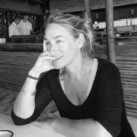
MysticMag meets Dr. Andrew Newberg, a pioneering neuroscientist who specializes in studying the relationship between brain function and various mental states. He is a leading figure in the field of “neurotheology,” focusing on the neurological underpinnings of religious and spiritual experiences. Dr. Newberg’s research involves using brain scans to study people during prayer, meditation, rituals, and trance states, aiming to gain insights into the nature of religious and spiritual practices and attitudes.
Andrew, your work in neurotheology explores the relationship between brain function and religious experiences. What led you to this field of study, and what are some of the most significant findings you’ve made?
For me, my lifelong pursuit in the field of neurotheology has been a deeply personal journey that began in childhood. I was always curious about the nature of reality and how we perceive it, questioning why there are different religions and political systems if we’re all looking at the same world. This led me to initially focus on the brain as the key to understanding how we make sense of the world. As I delved deeper into the neurosciences, especially during my college years, I realized that the answers to these big questions were more complex and involved issues of consciousness, philosophy, and theology. Through my medical training, I was fortunate to have mentors who guided me towards studying the connection between the brain and religious and spiritual experiences. This eventually led me to explore the possibility of using brain scans to study people in meditation or prayer, seeking to bridge the gap between neuroscience and spiritual phenomena. Since the 1990s, my research has expanded to include studies on various spiritual practices and experiences from different traditions, contributing to the growing field of neurotheology. One major conclusion from my research is that there isn’t just one part of the brain that becomes active during religious or spiritual experiences; it’s a complex interplay of different brain regions and functions. This suggests that if there is a spiritual part of ourselves, it encompasses our entire being. Another key insight is an appreciation for different perspectives and beliefs, as I’ve encountered genuine experiences and practices from diverse traditions. This has fostered a deep appreciation for the uniqueness of each individual’s perspective, leading me to believe that understanding and respecting these differences can help bring people together in a more harmonious way.
In your upcoming book, “Sex, God, and the Brain,” you explore the connection between sexuality and spirituality. Can you share some insights from your research on this topic?
I’m very excited about this book, which has been about 30 years in the making. My mentor, a psychiatrist and anthropologist, inspired me to explore the relationship between animal rituals and human rituals, particularly in religious practices. He believed that rituals, fundamental to human life, originated from animal mating rituals. Just as mating rituals help animals connect and identify each other, human rituals serve a similar purpose, binding us to our social, religious, or political groups. These rituals elicit deep feelings and connect us to the concepts within these groups. There has always been a known connection between sexuality and spirituality, both of which are deeply connected to the body. The autonomic nervous system, which connects the brain to the body, plays a role in eliciting feelings of arousal and calmness, similar to experiences in both sexual and spiritual contexts. This overlap is also seen in brain activity, with areas involved in sexuality often active during spiritual practices. For example, a meditation practice that incorporates sexual stimulation showed brain activity similar to that seen in traditional spiritual practices. The parietal lobe, which helps create our sense of self, is often less active during intense spiritual experiences, indicating a sense of oneness and connectedness. Overall, there is a significant overlap between the brain and body areas involved in sexuality and spirituality, suggesting a deep connection between these two powerful experiences.
How do meditation and prayer affect our brain function, based on your research? Are there specific changes in the brain that occur during these practices?
Well, I believe there are many different parts of the brain involved in these practices. Over the years, I’ve proposed a complex network of brain structures that become activated depending on the practice and how it’s performed. For instance, during prayer or meditation, focusing on the practice increases activity in the frontal lobes, which helps to focus attention. This heightened activity can also recruit the emotional centers of the brain, the limbic system, leading to feelings of love, joy, and other emotions commonly associated with these practices.
The parietal lobe is also significant. Over time, during these practices, the parietal lobe tends to decrease in activity. This area typically processes sensory information and gives us a sense of self and the boundary between ourselves and the world. A decrease in activity here is linked to a loss of that sense of self, leading to feelings of connectedness and oneness often described in peak spiritual or mystical experiences.
Additionally, the autonomic nervous system plays a role. Depending on the practice, it can induce arousal or calmness. For example, practices like Sufi dancing can be arousing, while deeply meditative practices can be calming and blissful. At certain peak experiences, there’s often a combination of both arousal and calmness.
This is just a brief overview, and there are many other parts of the brain involved. The type of engagement, whether verbal, visual, or sensory, determines which parts of the brain are activated. There are many pathways into this process, and the best approach varies from individual to individual. This diversity in approaches contributes to the many variations we see in these practices.
You emphasize the importance of keeping science rigorous and religion religious. How do you navigate the intersection of science and spirituality in your work?
It’s always a challenge, so I published a book called “Principles of Neurotheology,” where I discuss methodological challenges. What I mean by that statement is, on one hand, we aim to conduct good science, using the best techniques and ensuring our scientific approach yields statistically significant data, considering different variables and confounding factors. This rigor is crucial for any scientific research, including neurotheology. We want our results to be robust and legitimate, serving as a foundation for further exploration.
On the other hand, when I say we need to keep religion religious, I mean that if I study a practice like meditation or prayer, I must understand the practice itself and how it’s typically done. For example, if I have someone perform a prayer practice in an MRI scanner but they’re restrained and can’t fully engage in the prayer as they normally would, the results won’t accurately reflect their usual prayer experience. So, it’s essential to grasp the genuine nature of these practices and experiences. Much of my recent research, detailed in “The Varieties of Spiritual Experience,” is based on surveys where we gather information directly from people. We aim to deeply understand these experiences to ensure the spiritual aspect remains true and genuine.
Bringing a scientific perspective into these experiences allows us to evaluate them effectively and accurately. Ultimately, we strive to preserve the value and meaning of both scientific and religious perspectives. It’s crucial to remain open and cautious in interpreting data and information. Sometimes, our analysis leans more towards science, and other times, it leans towards religion. Each study or work of scholarship may emphasize one perspective more, but the goal is to maintain a balance, respecting both sides as much as possible.
What do you hope to achieve with your research in neurotheology, and what impact do you envision it having on our understanding of human consciousness and spirituality?
To me, one of the exciting aspects of neurotheology is its broad range, spanning from practical applications to more esoteric ones. On the practical side, I hope that we can learn more about how different practices and belief systems can benefit people, aiding them with psychological issues, stress, physical problems, and more. There is ongoing research exploring these areas, and neurotheology can help us understand the mechanisms behind these beneficial effects. Another important but less explored area is the negative consequences of religious and spiritual beliefs, such as when they lead to harm or unusual behaviors. Understanding these negative effects and the brain processes involved is also crucial.
Moving into more esoteric realms, consciousness is a key area of interest. Studying altered states of consciousness that occur in religious and spiritual experiences can provide insights into how our brains and minds work. Taking a multidisciplinary approach, like neurotheology, can be particularly valuable in unraveling the complexities of consciousness. I often liken neurotheology to a big jigsaw puzzle, with many pieces to explore. From typical religious experiences to mystical encounters, near-death experiences, psychedelic-induced states, and changes in beliefs due to aging or illness, each piece offers a unique perspective on human consciousness.
On the far esoteric side, neurotheology delves into fundamental questions about reality, how we understand it, and how we discern its accuracy. These questions touch on epistemology, metaphysics, and theology, offering a new perspective that complements philosophical and theological inquiry. For example, when discussing free will, we can turn to neuroscientific studies that show brain activity preceding conscious decisions, adding a new dimension to the debate. In essence, neurotheology has the potential to expand our understanding of human consciousness by exploring these diverse avenues, from the practical to the profound, and how they intersect to illuminate the human experience.
If you would like to find out more about Andrew Newberg, please visit http://www.andrewnewberg.com/



